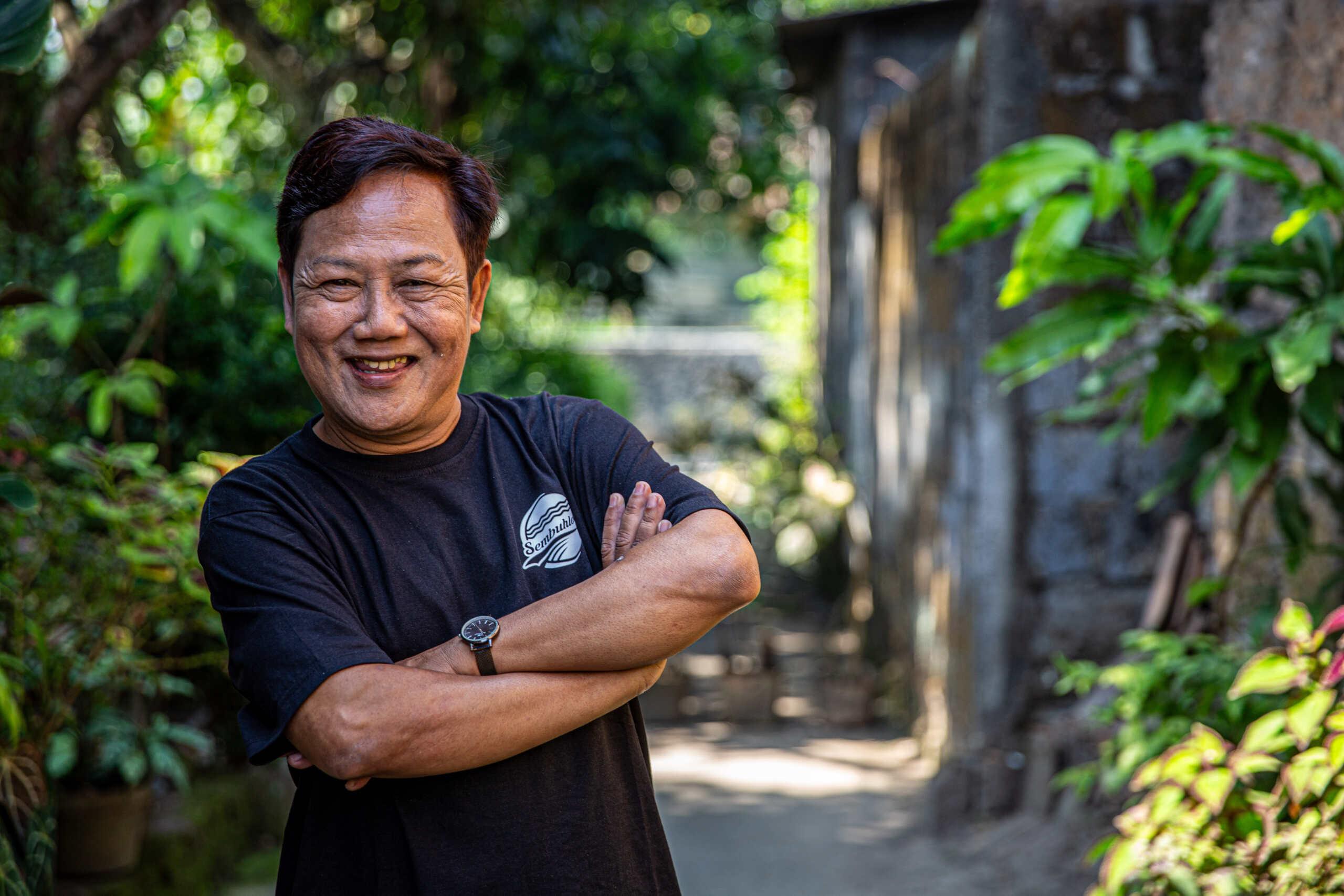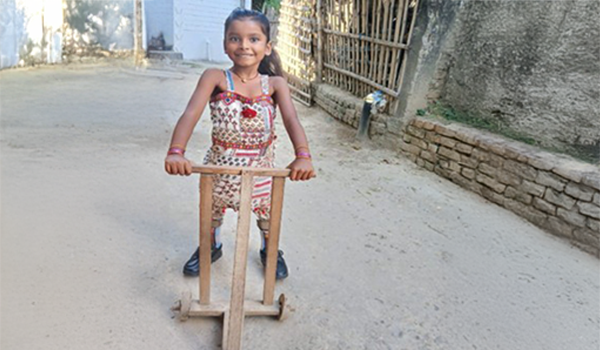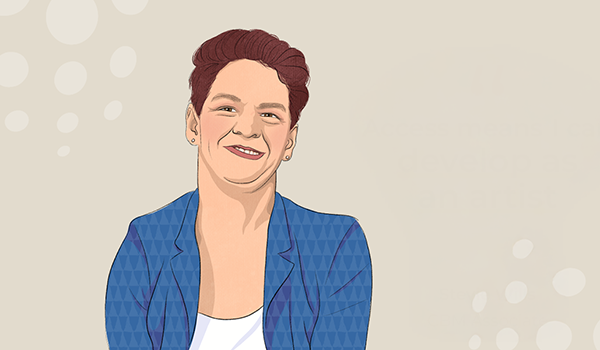Inclusive humanitarians – partnering for better disaster preparedness and response
Pacific, Stories | June 25, 2024
CBM recognises that, when it comes to disaster events, people with disabilities are most vulnerable to being left behind. This is why we were proud to be part of the Research for Development Impact (RDI) conference roundtable ‘Inclusive humanitarians – partnering for better disaster preparedness and response’.
This roundtable was chaired by Jason Brown, Partnership Director of the AHP Partnership Support Unit. It brought together four panellists with practitioner, technical, organisational and policy perspectives on disability inclusion in disaster preparedness and response. Panel members were Simone Bula (PDF), Liz Morgan (CBM Australia), Elsa Carnaby (Oxfam Australia), and Clemency Oliphant (DFAT).
Liz spoke about disability inclusive humanitarian action and detailed why it is essential that humanitarian action must be inclusive of people with disabilities.
“We know that 15 per cent of the world’s population are people with disabilities, and they are disproportionately affected in disasters and humanitarian crises”, Liz said.
“This means that humanitarian action has to be disability inclusive. This isn’t an optional add-on – it is fundamental to good and effective practice.”
Yet, research into the experiences of people with disabilities in disasters and humanitarian crises demonstrates that people with disabilities are not yet systematically included in disaster preparedness efforts: people with disabilities more likely to be left behind, injured and even killed during a disaster or emergency. In Tropical Cyclone Pam, the injury rate among people with disabilities was 2.45 times higher than among people without disabilities.
When a disaster or humanitarian crises does occur, people with disabilities may be unable to flee or evacuate safely with the rest of the community. If each stage of a disaster preparedness plan has not been planned with disability accessibility in mind, then people can become extremely vulnerable at any point.
This is because, even if people with disabilities can leave their house during a disaster, they may not be able to reach shelter due to long distances or difficult terrain. And, even if they can make it to the evacuation centre, they may not be able to enter it because of stairs or other barriers such as cultural beliefs or social expectations.
When considering disability accessibility, it is essential to remember the full diversity of disability, and to remember how disability intersects with other aspects of a person’s identity. 50% of men with disabilities reported barriers to accessing evacuation centres in Tropical Cyclone Pam, compared to 74% of women with disabilities. Many women with disabilities talked of not being able to go to the evacuation centre because they felt they wouldn’t have a safe and private space there.
When assistance begins to be provided in the aftermath of a disaster or humanitarian crisis, people with disabilities are often invisible and inadvertently excluded:
- The standard set of food and non-food items provided often doesn’t recognise the needs of people with disabilities – e.g. people with feeding difficulties or who need adapted feeding implements. It is also important to consider people with additional hygiene needs such as continence support: assistive products are not included as standard in pre-positioning or procurement of emergency response supplies.
- Distribution points for the distribution of humanitarian aid following Tropical Cyclone Winston in Fiji were inaccessible, located far away from communities, information circulated about the location of the distribution points was not accessible to all people with disabilities, and people with disabilities were unable to carry their supplies.
Kevin works at the PNG Assembly of Disabled Persons and has a disability. After a 7.5 magnitude earthquake hit the Highlands of PNG in February 2018, he mobilised to monitor how people with disabilities were being supported.
Kevin’s experience showed that disability inclusion within the humanitarian sector is still relatively new, and the situation and needs of people with disabilities are often invisible in preparedness, humanitarian response, and recovery efforts. The good news is that more and more humanitarian agencies are realising that, to implement effective and inclusive disaster preparedness and response, they must include people with disabilities.
To do this, a key step is to engage directly with people with disabilities to understand the vulnerabilities and barriers they face, identify their strategies to remove those barriers, and make the most of the capabilities people with disabilities can bring to disaster preparedness and humanitarian action. People with disabilities are the experts in their own lives, and humanitarian actors need to be able to access this expertise. Representative organisations, often called Disabled People’s Organisations (DPOs), can be the conduit between humanitarian actors and people with disabilities.
The AHP Disaster READY regional program includes several activities that address shelter needs, capacity development of DPOs, and building local manufacturing capabilities to meet humanitarian needs.
CBM Australia will build the capacity of the Fiji-based Pacific Disability Forum (PDF), the peak representative of disabled peoples’ organisations in the region. PDF will then support national DPOs in Fiji, PNG, Solomon Islands, Vanuatu and Timor-Leste to engage meaningfully and strategically in disability inclusive disaster risk reduction and preparedness for response efforts.
Throughout this process, a mutual capacity-building approach is being taken by CBM and PDF:
- Mainstream humanitarian agencies are getting access to the lived experience and valuable perspectives of people with disabilities through their “Shared Services” contributions. These contributions are made up of money that everyone pools together. This money is used to enable each national DPO to increase their human resources by hiring an extra staff member who has the time and mandate to apply disability inclusion to humanitarian action.
- The DPOs get access to humanitarian sectoral knowledge and the opportunity to influence the disaster preparedness projects NGOs are implementing.
In addition to the “shared services” funding support, CBM and PDF are implementing a regional capacity building project to foster regionally-level learning and to provide specific capacity building to the five national DPOs.
- PDF and CBM has put into place what we call our “Triangle Team”, where the national DPO leads the face-to-face engagement in-country, while getting back-up from us.
- PDF and CBM run regional capacity building and sharing workshops, and we are undertaking in-country support trips to conduct on-the-job mentoring and support.
We are also working together to create and test new resources, and find ways to gather the stories and experiences of people with disabilities at community level.
The idea is that, by 2022, we will have Pacific-specific guidance and comparative data to show what difference can be made when people with disabilities are actively participating in disaster preparedness and response.
In conclusion, CBM is working with partners to create a world where people with disabilities are no longer most vulnerable to being left behind in disaster events.
Acknowledgements
CBM acknowledges and thanks contributions to this piece from Disaster READY Regional.
https://www.cbm.org.au/stories/inclusive-humanitarians-partnering-for-better-disaster-preparedness-and-response
Related Stories

Mental health: a community, governance, and human rights issue
Mental health conditions are among the most prevalent and significant contributors to disability worldwide. However,...

Breaking barriers: Sivani walks to school
Sivani, a six-year-old from a rural municipality in southeastern Nepal, was born with Spina Bifida – a condition that...

Stevie Wills on grief, growth and the power of accessibility
For Stevie Wills – performance poet, writer, disability advocate and CBM Australia associate –...
